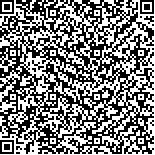| 姚承志,张译匀,吴 霞,等.1990—2019年全球甲状腺癌发病现状分析及2020—2030年发病趋势预测[J].中国肿瘤,2023,32(11):848-855. |
| 1990—2019年全球甲状腺癌发病现状分析及2020—2030年发病趋势预测 |
| Analysis of Worldwide Thyroid Cancer Incidence from 1990 to 2019 and Trend Prediction from 2020 to 2030 |
| 投稿时间:2023-05-05 |
| DOI:10.11735/j.issn.1004-0242.2023.11.A006 |
|
 |
| 中文关键词: 甲状腺癌 全球疾病负担 发病 趋势分析 |
| 英文关键词:thyroid cancer Global Burden of Disease incidence trend analysis |
| 基金项目:国家自然科学基金(81673107) |
|
| 摘要点击次数: 765 |
| 全文下载次数: 348 |
| 中文摘要: |
| 摘 要:[目的] 分析1990—2019年全球甲状腺癌(TC)发病现状和变化趋势,并预测未来TC发病情况。[方法] 从联合国开发计划署收集人类发展指数(HDI)数据,利用2019全球疾病负担数据库(GBD 2019),按地理、社会人口指数(SDI)、国家和地区、性别、年龄收集1990—2019年全球TC发病数据,计算年估计百分比变化(EAPC)来分析发病趋势变化,通过Pearson相关分析研究年龄标化发病率(ASIR)与HDI的相关性。使用贝叶斯年龄-时期-队列(BAPC)模型预测2020—2030年发病情况。[结果] 1990—2019年全球ASIR呈上升趋势(EAPC=1.25,95%CI:1.12~1.37)。19个区域呈上升趋势,增幅最大的是澳大拉西亚(Australasia)(EAPC=2.72,95%CI:2.37~3.07)。5类SDI国家和地区发病数与ASIR均呈上升趋势,其中,中SDI国家和地区发病数与ASIR上升最快(EAPC=2.36,95%CI:2.28~2.44),2019年高SDI国家和地区的发病数、ASIR最高,分别为6.84万例、4.59/10万。165个国家和地区ASIR呈上升趋势,沙特阿拉伯增长幅度最大(EAPC=5.67,95%CI:5.37~5.98),中国2019年发病数最多,为3.91万例。男性ASIR较女性上升更多,EAPC分别为1.89(95%CI:1.77~2.02)、0.98 (95%CI:0.85~1.12)。TC粗发病率在低年龄组时已逐步上升,发病率顶峰为75~79岁年龄组,为9.35/10万;50~54岁组发病数最多,为2.75万例。2019年不同国家和地区的ASIR与其HDI呈正相关(r=0.62,P<0.001)。预测2030年全球TC的ASIR、发病数分别将达3.26/10万、33.13万例。[结论] 2019年女性、高SDI国家和地区、中老年人群ASIR和发病数更高,但过去30年男性、中SDI国家和地区上升更快。1990—2019年5类SDI、19个区域、165个国家和地区ASIR均呈上升趋势,预测2020—2030年全球TC发病数和ASIR可能进一步上升。应密切关注TC防控,加强对高危人群的保护。 |
| 英文摘要: |
| Abstract:[Purpose] To analyze the worldwide incidence of thyroid cancer (TC) from 1990 to 2019, and predict the trends from 2020 to 2030. [Methods] Human development index(HDI) data were collected from the United Nations Development Programme and global TC incidence data were collected from the 2019 Global Burden of Disease Database(GBD 2019) by geography, socio-demographic index(SDI), country and region, gender, and age during 1990—2019. The estimated annual percentage change(EAPC) was calculated for incidence trend. Pearson correlation was used to analyze the correlation between age-standardized incidence rate(ASIR) and HDI. A Bayesian age-period-cohort(BAPC) model was used to predict trends of incidence. [Results] The global ASIR increased from 1990 to 2019(EAPC=1.25, 95%CI: 1.12~1.37). There were 19 regions in the world showing an upward trend with the fastest growth in Australasia(EAPC=2.72, 95%CI: 2.37~3.07). Both incident number and ASIR in all five types of SDI showed an increasing trend, and the countries and regions with middle SDI showed the fastest increasing trend(EAPC=2.36, 95%CI: 2.28~2.44). The incident number (6.84×104) and ASIR(4.59/105) in countries and regions with high SDI were the highest in 2019. Among 165 countries and regions, ASIR showed an increasing trend, and Saudi Arabia showed the fastest increase(EAPC=5.67, 95%CI: 5.37~5.98). China had the highest incident number (3.91×104 cases in 2019). The ASIR in male increased faster than that in female with EAPC of 1.89 (95%CI: 1.77~2.02) and 0.98(95%CI: 0.85~1.12), respectively. The crude incidence rate of TC increased gradually in the lower age group, and the peak incidence rate was 9.35/105 in the age group of 75~79, and the highest incident number was 2.75×104 cases in the age group of 50~54. The ASIR was positively correlated with HDI in different countries and regions(r=0.62, P<0.001). It is predicted that in 2030, the ASIR and incident number of TC worldwide would reach 3.26/105 and 33.13×104 cases, respectively. [Conclusion] The study shows that the higher incident number and ASIR of TC are associated with female gender, high SDI and middle-aged and elderly people; however, the incidence and ASIR have been rising faster in males and middle SDI countries and regions in the past 30 years. It is predicted that the incident number and ASIR of TC may further increase worldwide from 2020 to 2030. |
|
在线阅读
查看全文 查看/发表评论 下载PDF阅读器 |
|
|
|